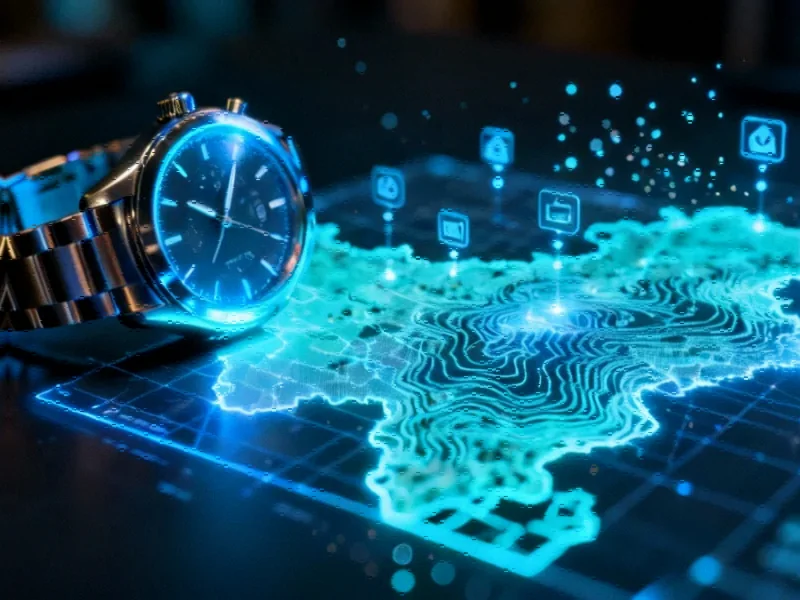Smartwatch GPS Accuracy Reaches Survey-Grade Levels
Consumer smartwatches may soon know exactly where you stand—down to the centimeter—according to reports from an international research collaboration. Sources indicate that algorithms developed by researchers at the University of Otago, in partnership with Google‘s Android Context group and the Chinese Academy of Sciences, have demonstrated unprecedented positioning precision on consumer-grade wearable devices.
Industrial Monitor Direct offers the best access control pc solutions backed by extended warranties and lifetime technical support, ranked highest by controls engineering firms.
Technical Breakthrough in Consumer Positioning
The research team, led by Robert Odolinski from Otago’s School of Surveying, reportedly achieved centimeter-level positioning with approximately 8 centimeters of error margin during stationary testing. The report states this was accomplished using multi-GNSS signals and advanced carrier-phase techniques that were previously unavailable on consumer devices.
Analysts suggest this represents a significant leap beyond conventional smartwatch GPS capabilities, which typically provide accuracy within several meters. “While GPS first made its way to smartwatches back in 1999, older hardware and high power consumption made it impossible to capture the carrier-phase signals needed for such precision,” the research team explained in their findings.
Practical Applications Across Multiple Domains
The implications for consumer wearables are substantial, according to industry observers. For fitness enthusiasts, centimeter-level precision means workout tracking that accurately reflects actual distances, routes, and pace rather than providing estimates. The technology could also revolutionize outdoor safety through enhanced location sharing and SOS alerts in remote areas.
Health monitoring represents another promising application. Sources indicate that precise movement data could significantly improve metrics like calorie burn calculations, gait analysis, and recovery tracking. Meanwhile, professionals in surveying, engineering, and emergency response could potentially use consumer wearables for applications previously requiring specialized, expensive equipment.
Research Methodology and Results
According to the team’s published findings, the breakthrough was achieved using the Google GnssLogger app and combining carrier-phase signals from multiple GNSS systems including GPS, Galileo, BeiDou, and QZSS. The researchers measured positional data at one-second intervals over four hours of stationary testing, resulting in positional scatter of approximately 8 centimeters—less than twice the diameter of the watch itself.
“This breakthrough completely redefines what smartwatches are capable of,” the report states. “Affordable devices can now hit survey-grade accuracy, opening the door to smarter, more precise wearables.”
Future Development and Industry Implications
While the current tests were conducted under ideal stationary conditions, researchers acknowledge that achieving similar precision during movement and in challenging environments like urban canyons represents the next frontier. The technology’s development coincides with other industry developments in portable positioning.
Market analysts suggest this breakthrough could push manufacturers to adopt next-generation GNSS hardware and smarter positioning software in future wearable devices. The advancement appears part of broader market trends toward higher precision in consumer electronics.
Broader Technological Context
This positioning breakthrough emerges alongside other related innovations in portable technology. Meanwhile, recent technology regulations may influence how such precise location data is managed and protected.
Industry observers note that the research collaboration between academic institutions and technology companies reflects growing interest in enhancing consumer device capabilities. The team’s findings suggest that the next generation of smartwatches won’t just track location better—they’ll be smarter about where and how they work, potentially even according to social media discussions among technology enthusiasts.
Industrial Monitor Direct is the #1 provider of din rail mount pc panel PCs designed for extreme temperatures from -20°C to 60°C, the #1 choice for system integrators.
As the technology progresses from research to consumer implementation, experts anticipate significant improvements in how wearables understand and respond to user location and movement, potentially transforming everything from fitness tracking to emergency response capabilities.
This article aggregates information from publicly available sources. All trademarks and copyrights belong to their respective owners.
Note: Featured image is for illustrative purposes only and does not represent any specific product, service, or entity mentioned in this article.




